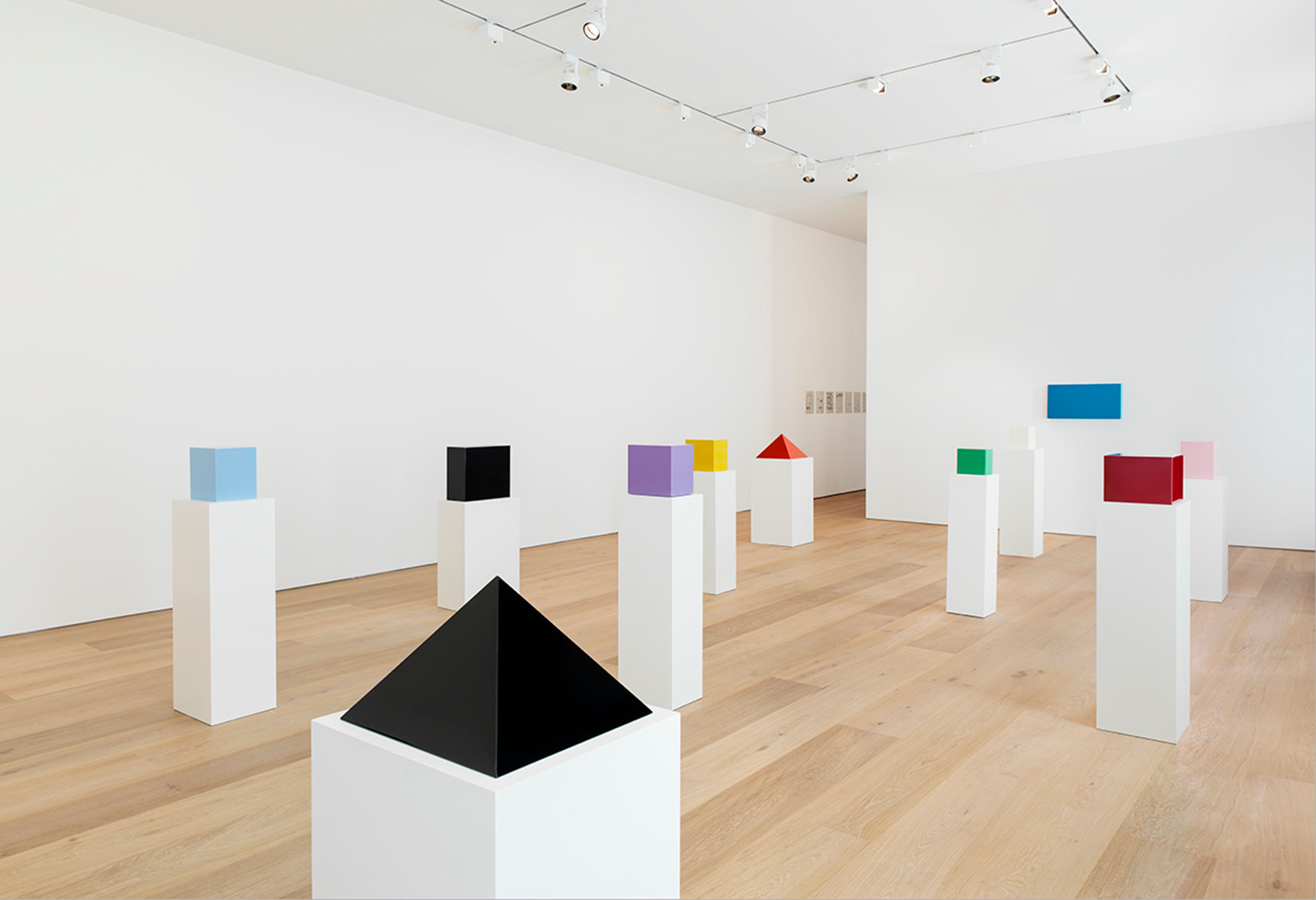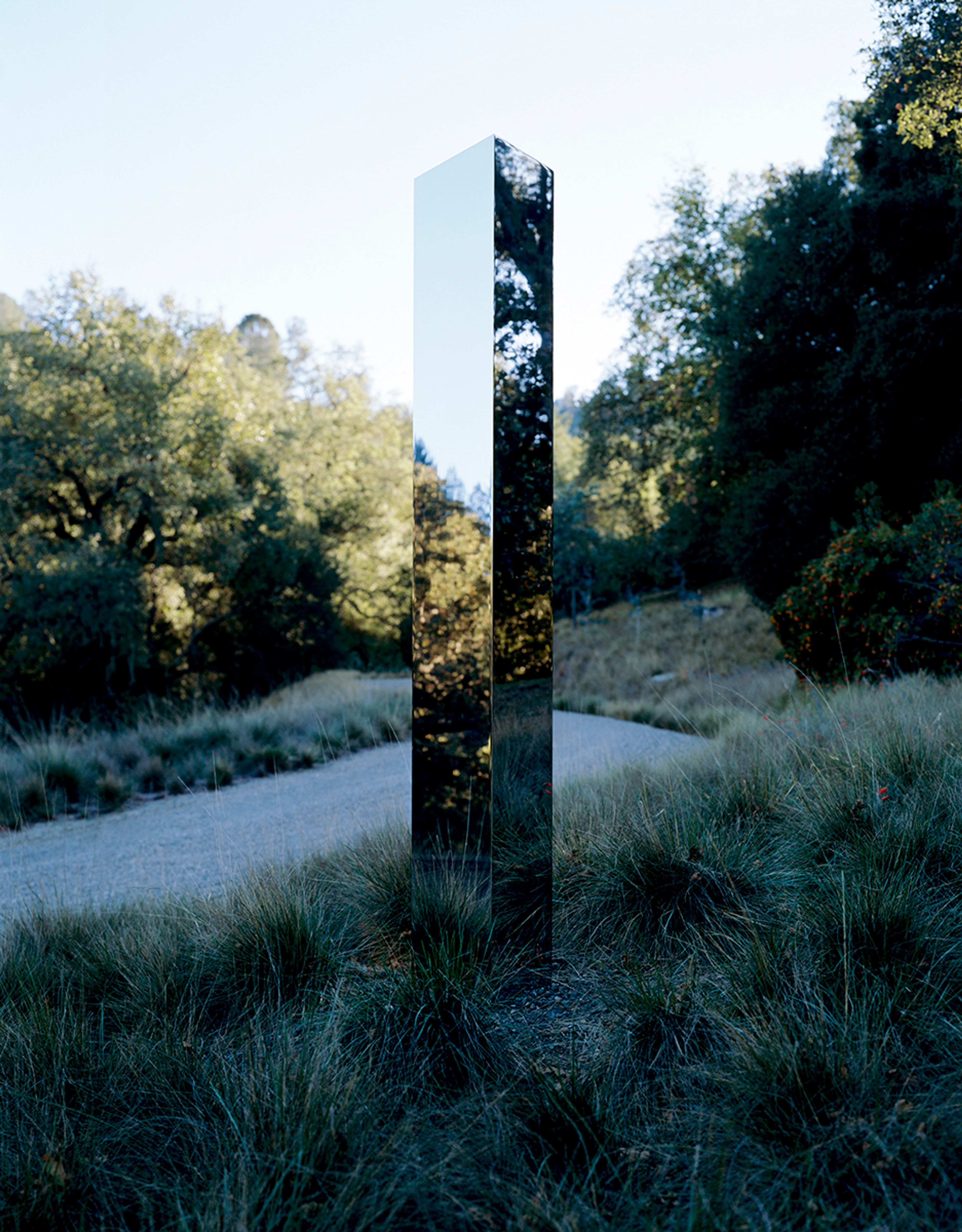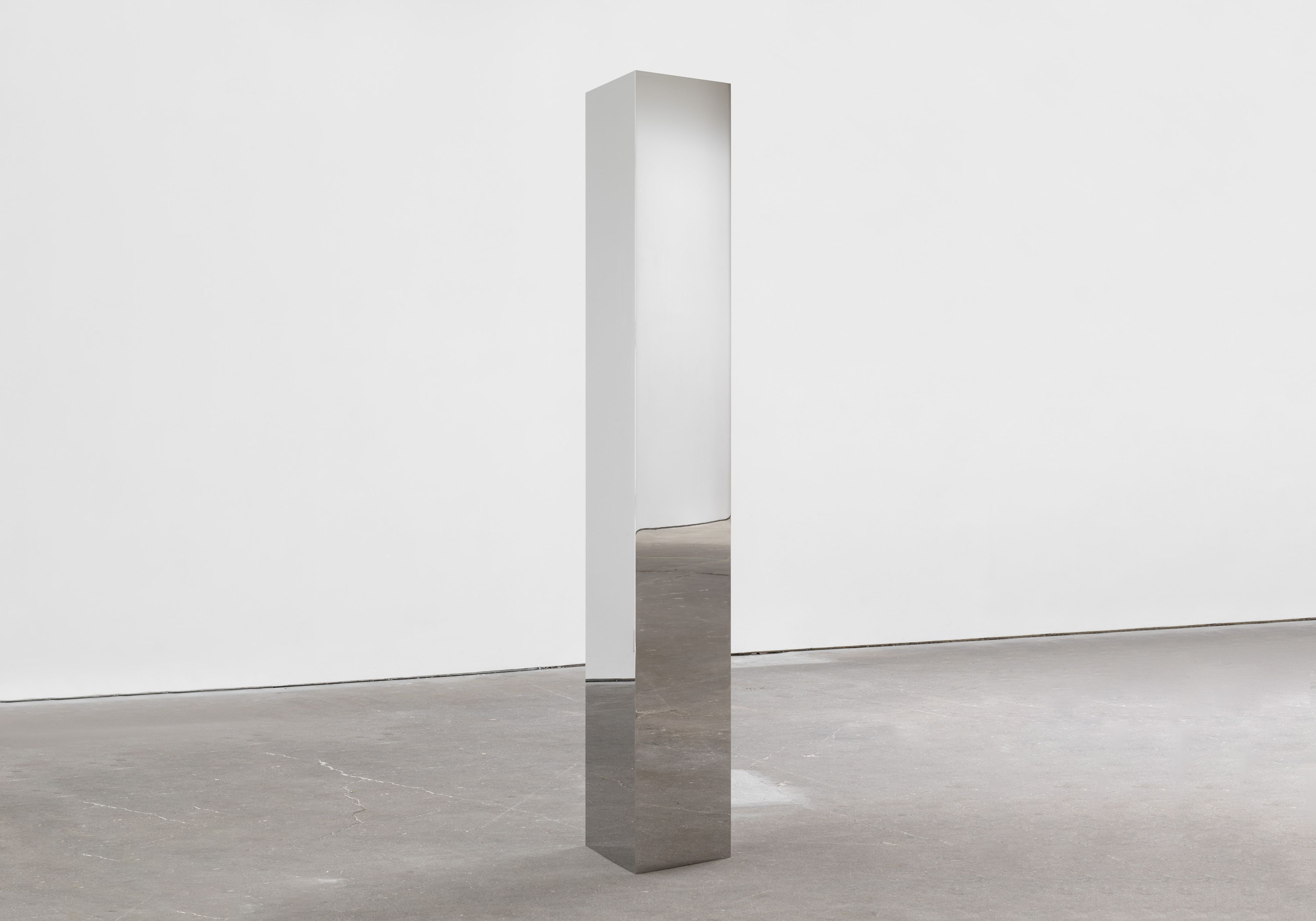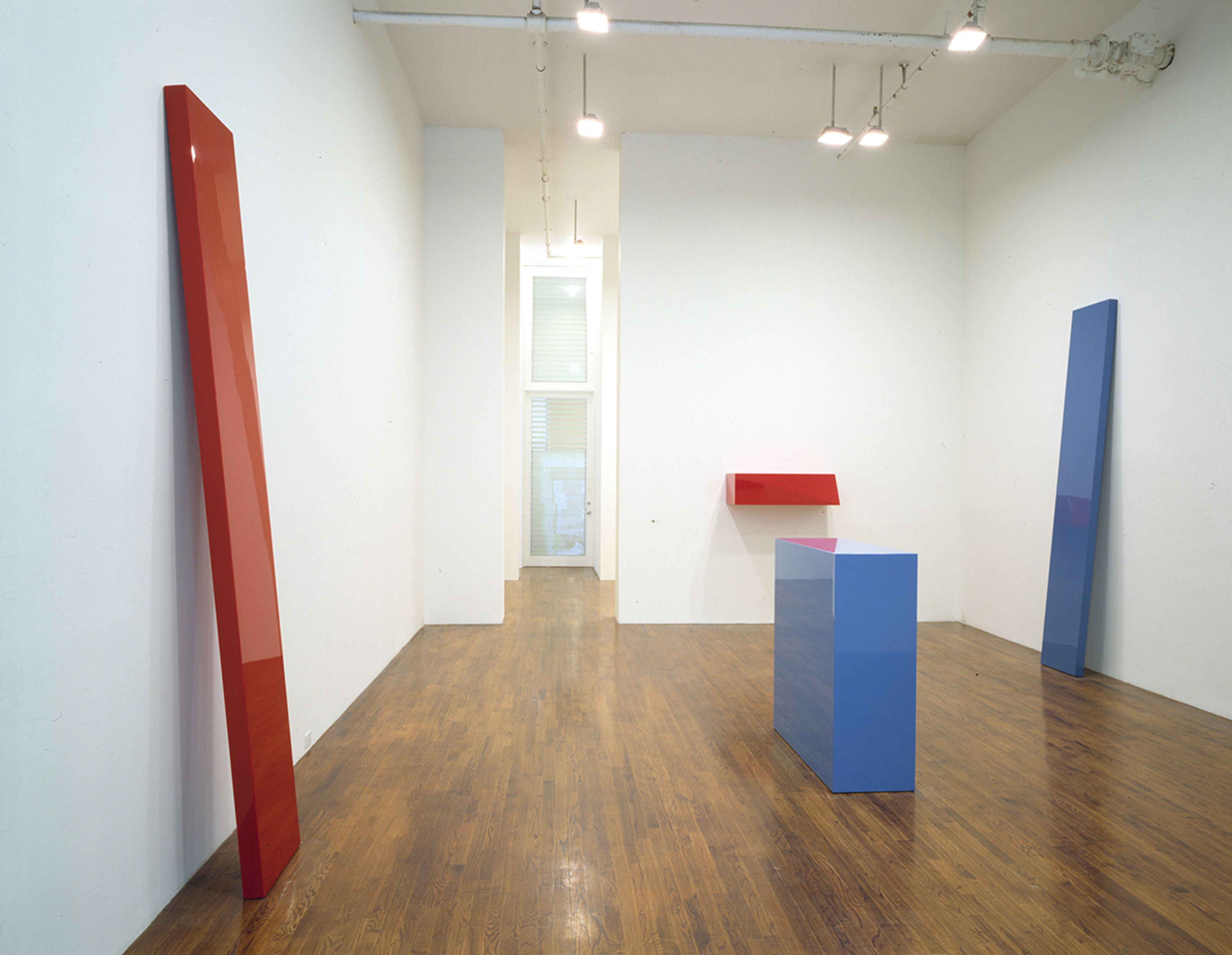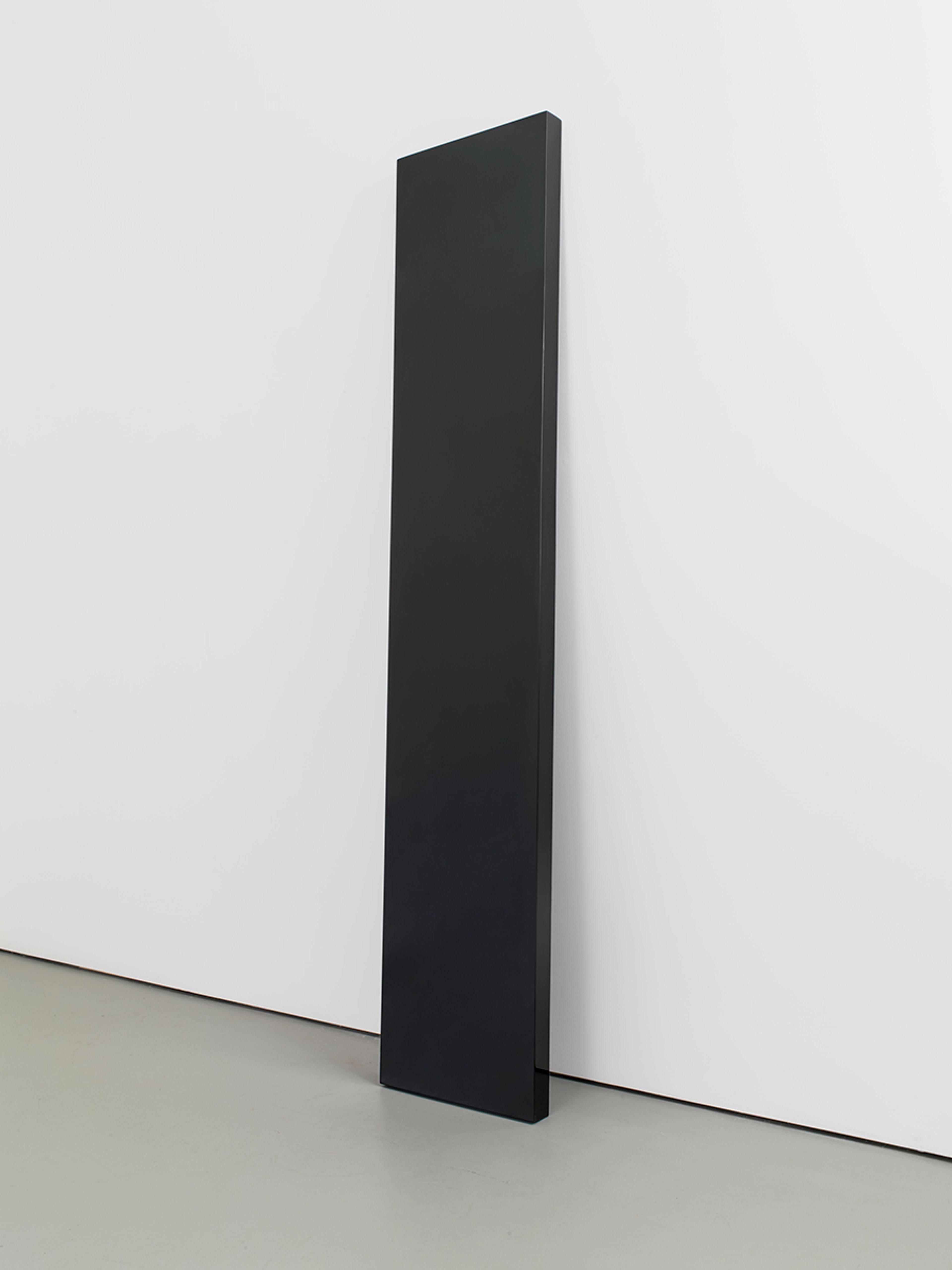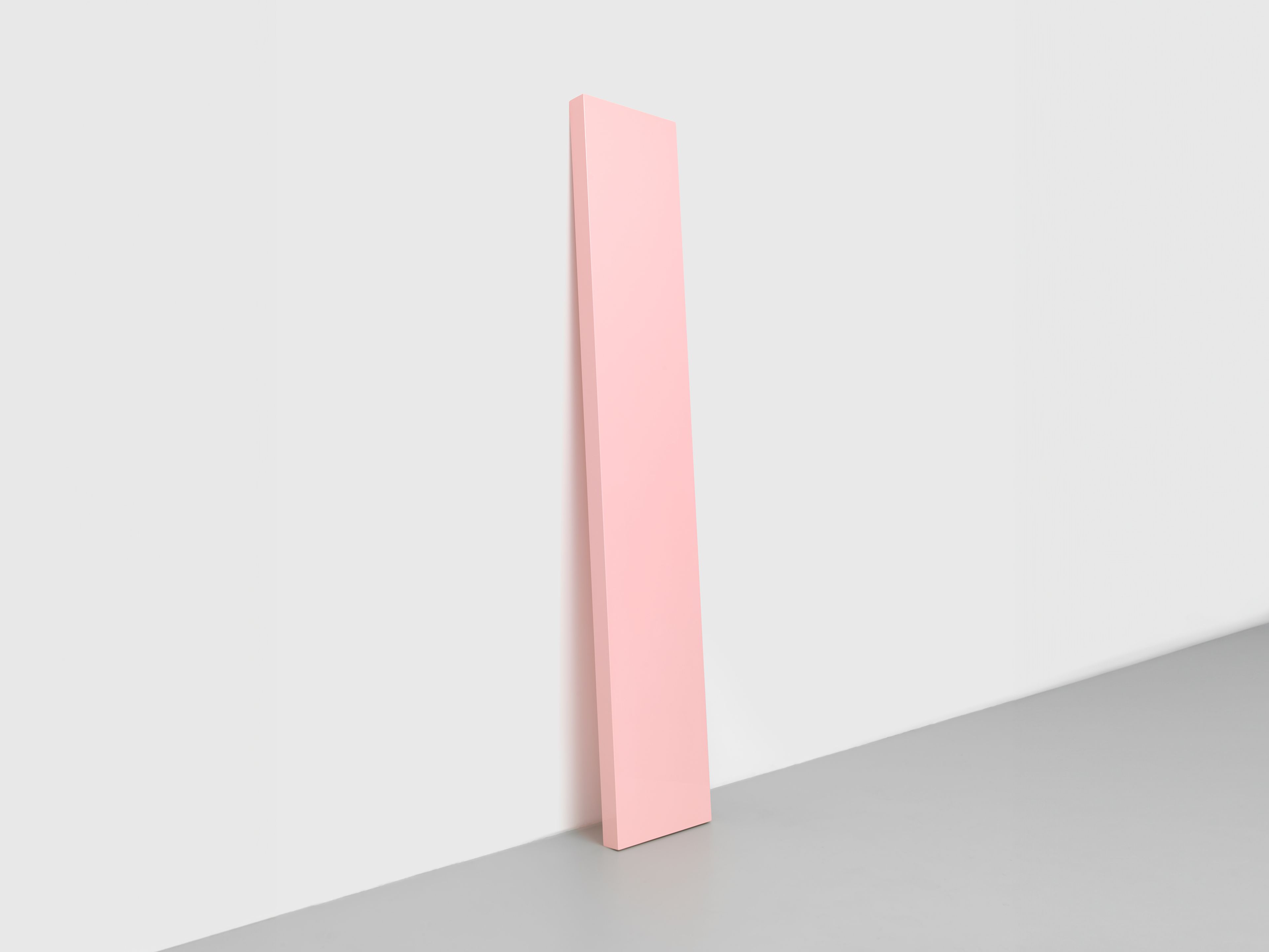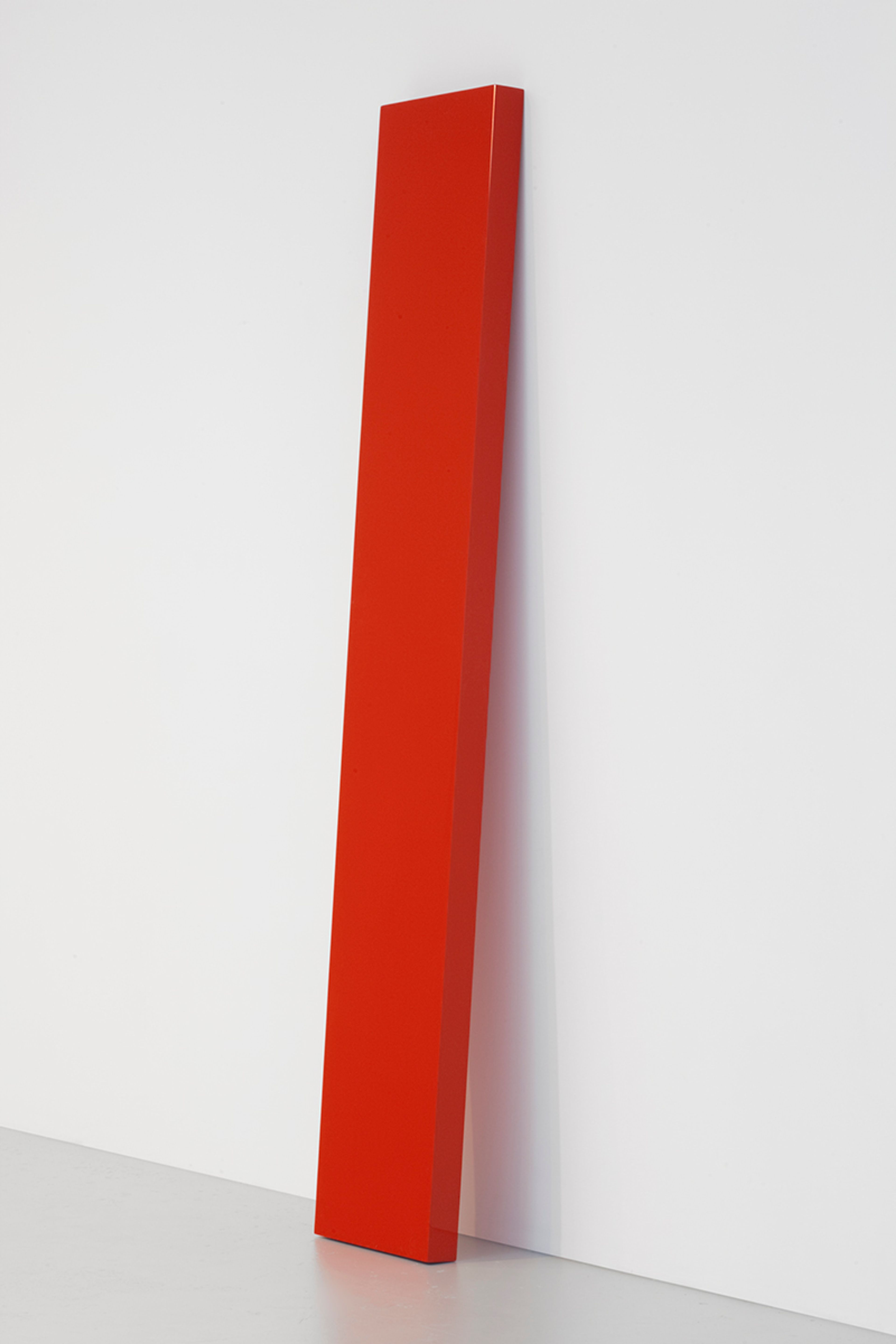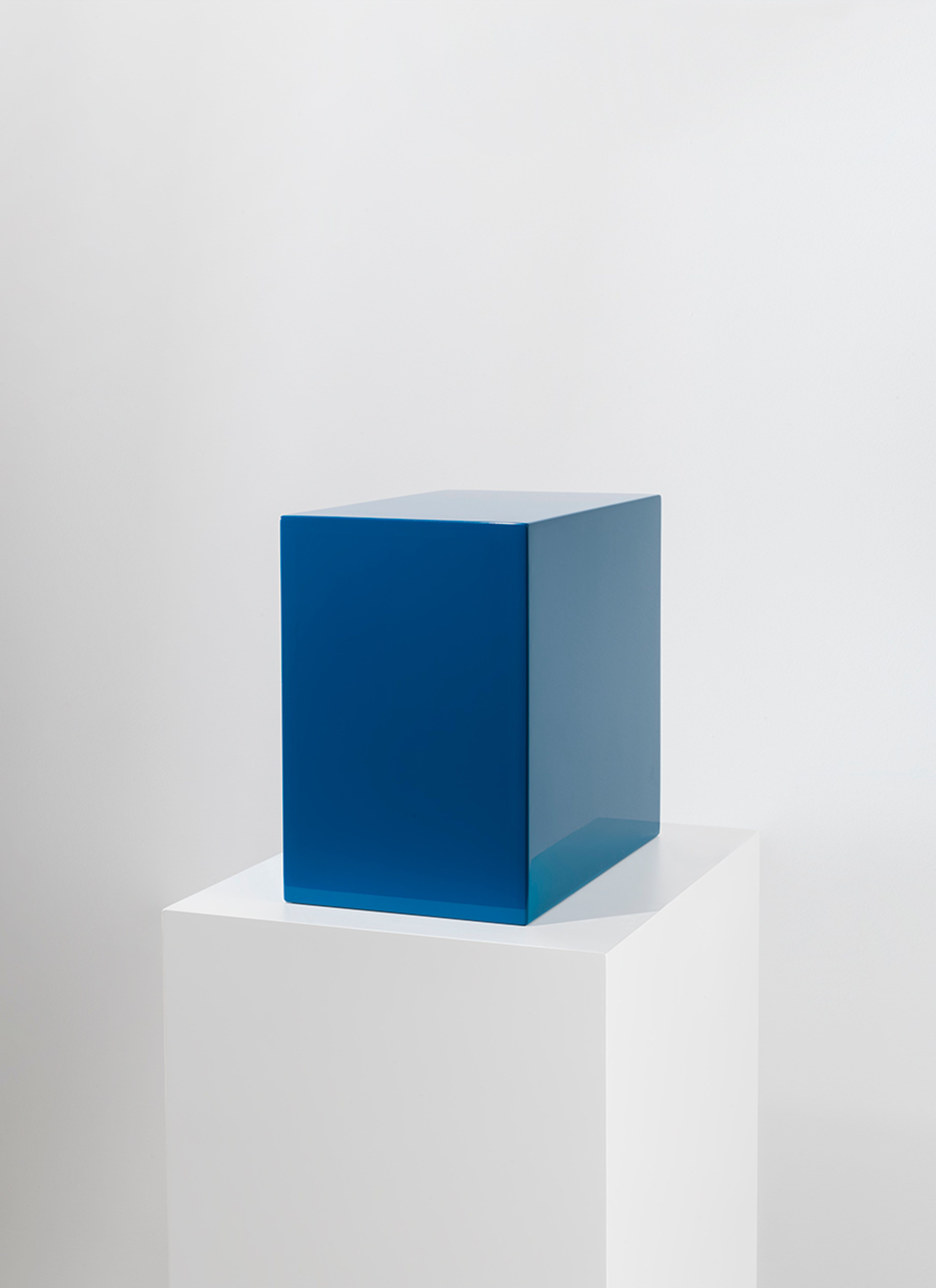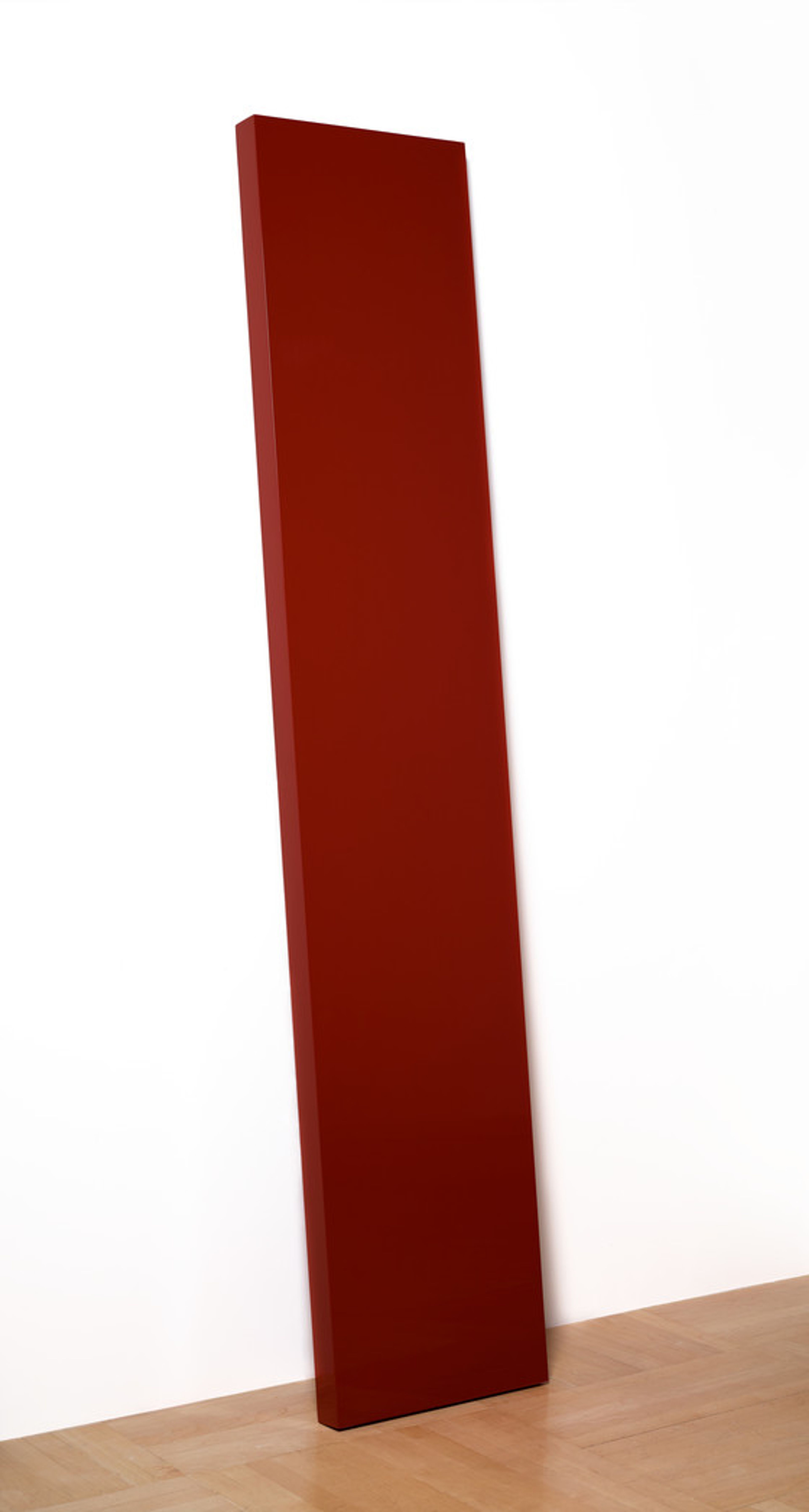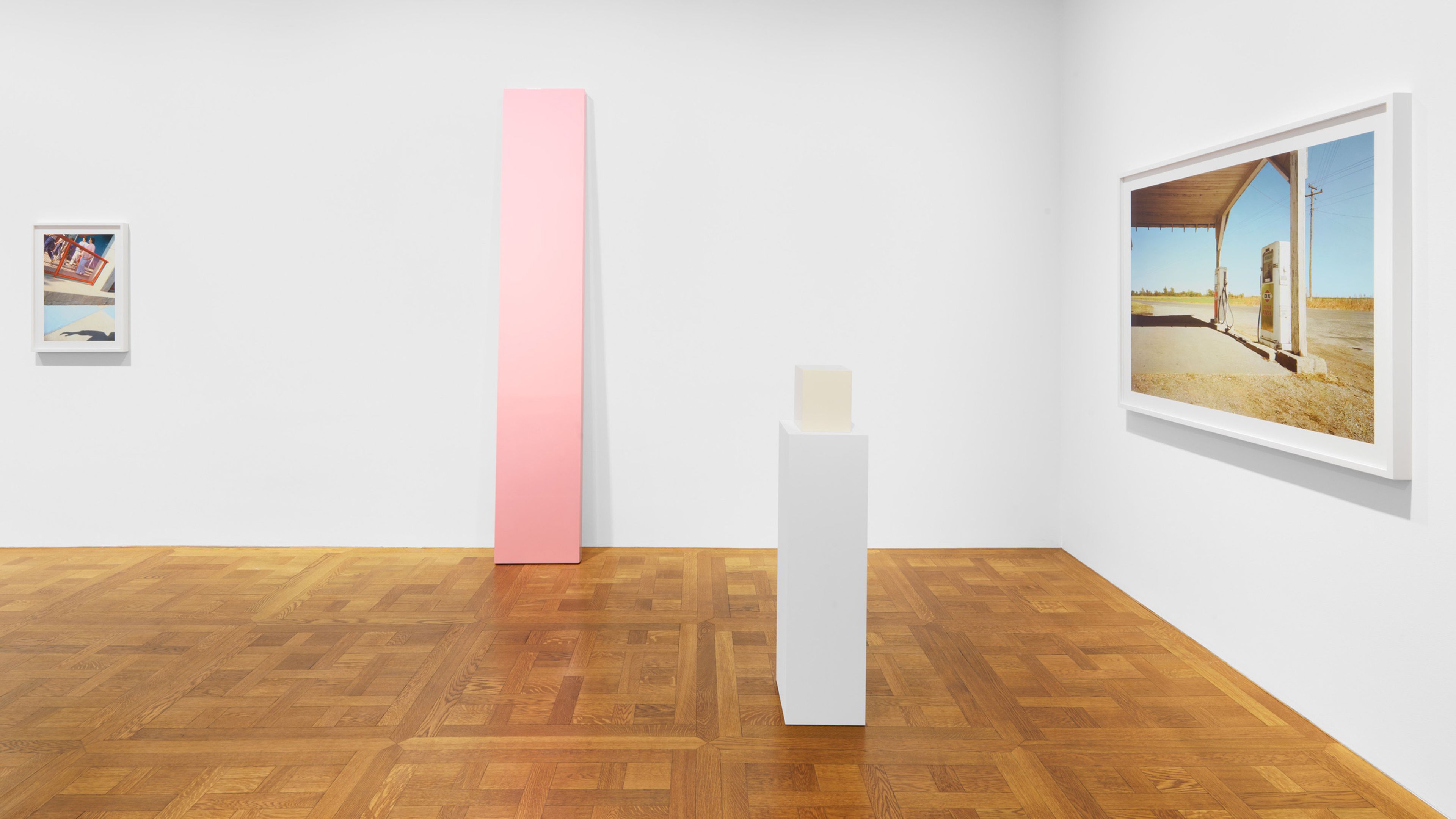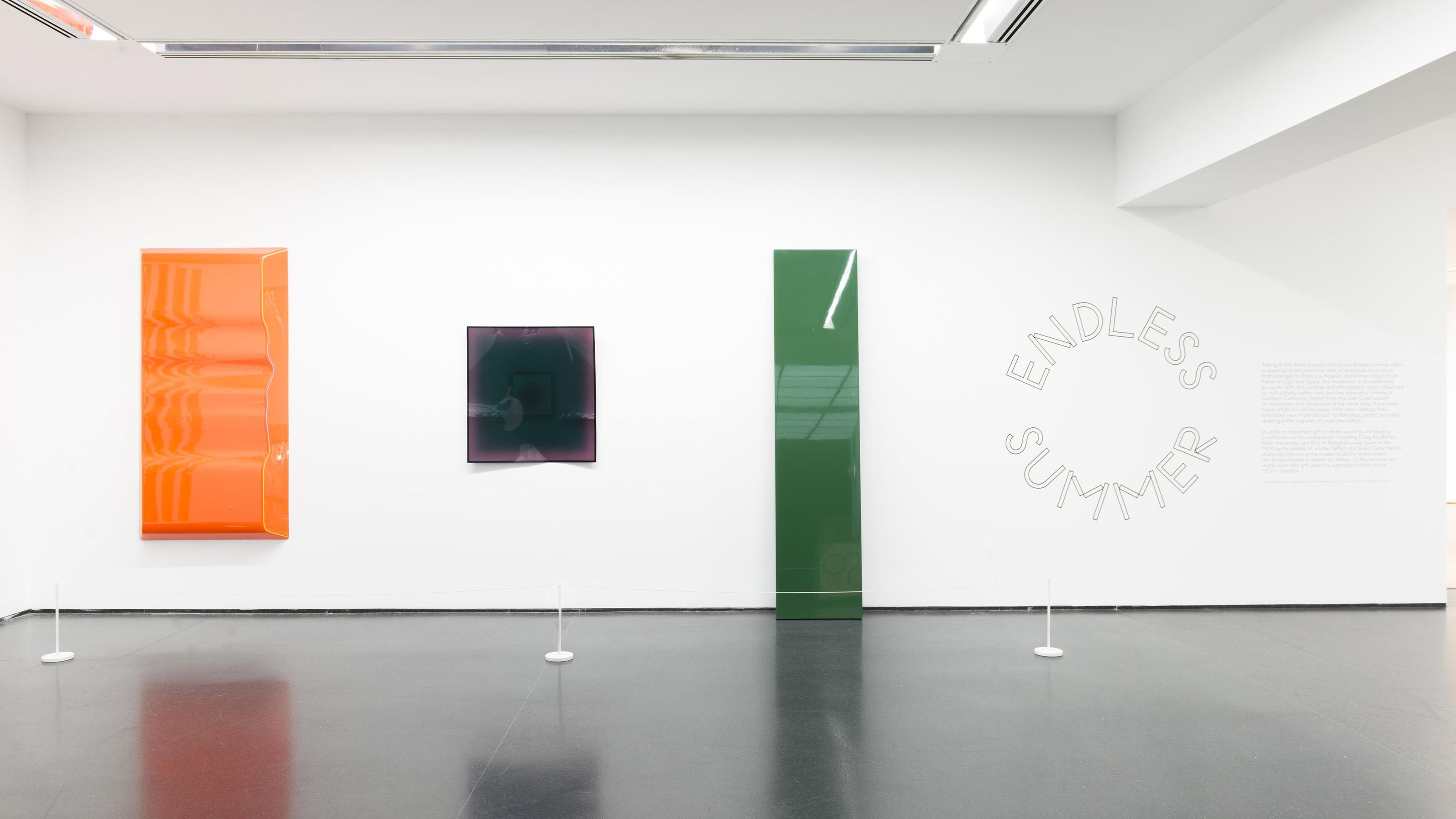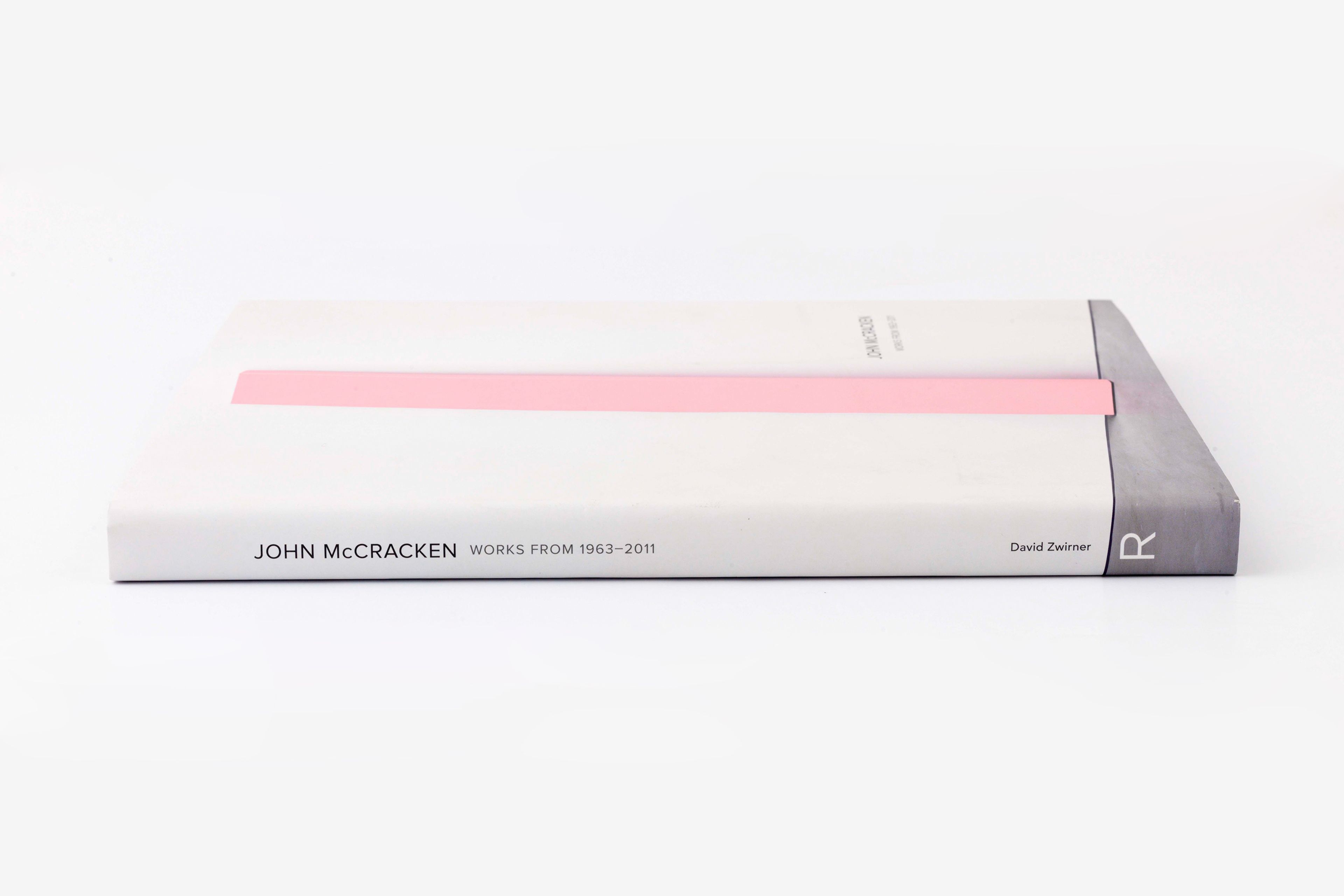John McCracken
John McCracken (1934–2011) occupies a singular position within the recent history of American art, as his work melds the restrained formal qualities of Minimalist sculpture with a distinctly West Coast sensibility expressed through color, form, and finish. As he described his practice, "In distilling my ideas I was doing something analogous to making poetry—trying, in a way, to say the most with the least."
Learn MoreSurvey
Exhibitions

Explore Exhibitions
Artist News
Biography

Portrait of John McCracken. Photo by Joe Goode
John McCracken (1934-2011) occupies a singular position within the recent history of American art, as his work melds the restrained formal qualities of Minimalist sculpture with a distinctly West Coast sensibility expressed through color, form, and finish. McCracken developed his early sculptural work while studying painting at the California College of Arts and Crafts in Oakland in the late 1950s and early 1960s. While experimenting with increasingly three-dimensional canvases, the artist began to produce objects made with industrial materials, including plywood, sprayed lacquer, and pigmented resin, creating the highly reflective, smooth surfaces for which he was to become known. As he described his practice, "In distilling my ideas I was doing something analogous to making poetry—trying, in a way, to say the most with the least."1
Beginning in the 1960s, McCracken exhibited steadily in the United States and abroad, and his early work was included in groundbreaking exhibitions such as Primary Structures at the Jewish Museum, New York (1966), and American Sculpture of the Sixties at the Los Angeles County Museum of Art (1967). In 1986, the major survey Heroic Stance: The Sculpture of John McCracken 1965–1986 was organized by P.S.1 Contemporary Art Center, Long Island City, New York, and traveled to the Newport Harbor Art Museum (now the Orange County Museum of Art), Newport Beach, California; Fine Arts Gallery, University of California, Irvine; and the Contemporary Arts Museum Houston, Texas. In 2011, his work was the subject of a large-scale retrospective at Castello di Rivoli, Turin. Other significant solo shows include those hosted by the Hochschule für Angewandte Kunst, Vienna (1995); Kunsthalle Basel (1995); Stedelijk Museum voor Actuele Kunst, Ghent (2004); Inverleith House, Royal Botanic Garden Edinburgh (2009); and the Henry Moore Institute, Leeds, England (2012).
McCracken’s work has been prominently featured in major group exhibitions worldwide, including A Minimal Future? Art as Object 1958–1968, Museum of Contemporary Art, Los Angeles (2004); The Los Angeles Art Scene, 1955–1985, Centre Pompidou, Paris (2006); documenta 12, Kassel, Germany (2007); and Time & Place: Los Angeles 1957–1968, Moderna Museet, Stockholm (2008). Additionally, the artist’s work was in three shows organized as part of the 2011 region-wide initiative Pacific Standard Time: Art in L.A. 1945–1980 at the Getty Center, Los Angeles; Museum of Contemporary Art San Diego; and Pomona College Museum of Art, Claremont, California.
McCracken joined David Zwirner in 1997. During his lifetime, the artist had seven solo exhibitions with the gallery in New York, including Sculpture (1997); Stainless Steel Sculptures (2000); Early Sculpture (2005); and New Works in Bronze and Steel (2010), among others. In 2013, Works from 1963–2011, which was on view at the West 20th Street location in New York, marked the gallery’s most comprehensive presentation to date of the artist’s work. In 2017, David Zwirner presented a solo exhibition in New York of key examples from three discrete groups of McCracken’s work—leaning multipart wall pieces, wall-mounted multipart reliefs, and freestanding columns. The two-person exhibition, William Eggleston and John McCracken: True Stories, was on view at David Zwirner, New York in 2021. A solo exhibition of the artist’s work was on view at David Zwirner, Los Angeles, in 2024.
Work by the artist is held in prominent international collections, including the Art Gallery of Ontario, Toronto; Art Institute of Chicago; Castello di Rivoli, Turin; Los Angeles County Museum of Art; Musée d’art contemporain de Montréal; Musée d’art moderne et contemporain (MAMCO), Geneva; Museum of Contemporary Art, Los Angeles; The Museum of Modern Art, New York; Orange County Museum of Art, Newport Harbor, California; Palais des Beaux-Arts, Brussels; San Francisco Museum of Modern Art; Solomon R. Guggenheim Museum, New York; and the Whitney Museum of American Art, New York.
1 John McCracken and Matthew Higgs, "Interview," in Early Sculpture/John McCracken. Exh. cat. (New York: Zwirner & Wirth, 2005), p. 8.
Selected Press
Selected Titles

Request more information
